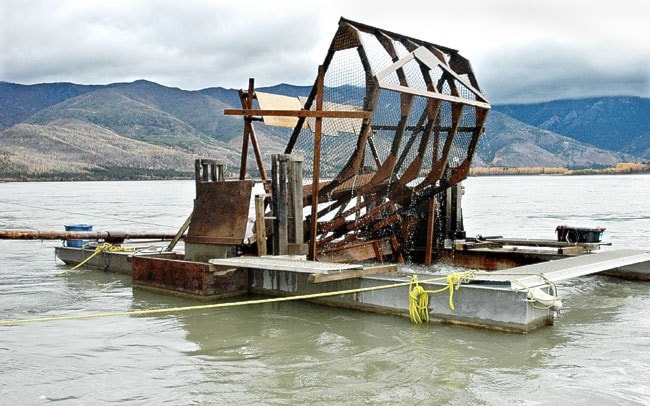Chinook counts are looking dismal this year at the mouth of the Yukon River.
Early counts suggest that this could be the latest and the smallest run on record.
“That’s cause for concern, for sure,” said Mary Ellen Jarvis with the Department of Fisheries and Oceans.
We still have to wait, however, to know exactly what these numbers will mean for the Yukon, said Jarvis.
When the fish reach the checkpoint at Eagle, Alaska, officials will have a better sense of how the resource will be managed, harvested and conserved.
“That’s really our big trigger, and that’s where we would be making our decisions.”
Representatives from dozens of communities along the Yukon River as well as officials from both sides of the border chimed in Tuesday for a two-hour-long conference call to give and receive updates on the fish situation.
Subsistence fishermen mostly reported high water levels and poor fishing. Some called for even more severe restrictions on fishing, and even a full closure on the Yukon River.
Carl Sidney called in from Burwash Landing. He is worried about the future of the fish.
“In about 10 years we’re not going to have nothing to talk about, if people don’t start taking drastic measures to let our salmon survive, because I don’t see it surviving any more than 10 more years.”
Steve Hayes with the Alaska Department of Fish and Game reported that as of June 25, 31,300 Chinook salmon had been counted at the Pilot Station sonar counter, about 200 kilometres upstream from the mouth of the Yukon River.
The average count for June 25 is 89,000 fish, or 49,100 in years when the run has been late.
This could be the latest run for chinook salmon on the Yukon River on record, Hayes said.
Alaska has imposed closures on subsistence fishing to help ensure that enough fish make it to the Canadian border. Roughly half of the chinook that enter the Yukon as part of the first pulse are of Canadian origin.
Alaskan officials have an obligation under the Yukon River Salmon Agreement to ensure that enough fish make it into Canada to meet escapement and spawning goals.
There is no penalty if they do not meet this obligation. But “they have certainly been paying more attention to it, considering that the fish are failing to return in numbers as would be forecast by escapement data,” said Jarvis.
Chinook salmon returns have been on the decline for about the past decade, but there’s “no real smoking gun” of what the cause might be, Jarvis said.
Environmental factors in the ocean and in the river could both contribute.
Communities along the Yukon River on this side of the border rely on the salmon for subsistence fishing, but in the past decade they have undertaken voluntary measures to reduce their harvest and protect the stock, Jarvis said.
The Yukon also has a handful of active domestic fishing permits, which allow families living a rural lifestyle to harvest about 25-30 fish annually to feed themselves.
Recreational catch-and-release of salmon is usually permitted in the Yukon River, except where voluntary closures in the aboriginal fishery could create conflict between subsistence fishermen and hobbyists.
No radical management decisions will be made in the Yukon yet, Jarvis said.
“I don’t at this point want to be too doom-and-gloom, because, again, it’s very early in the year. It’s a wait-and-see.”
Contact Jacqueline Ronson at
jronson@yukon-news.com
